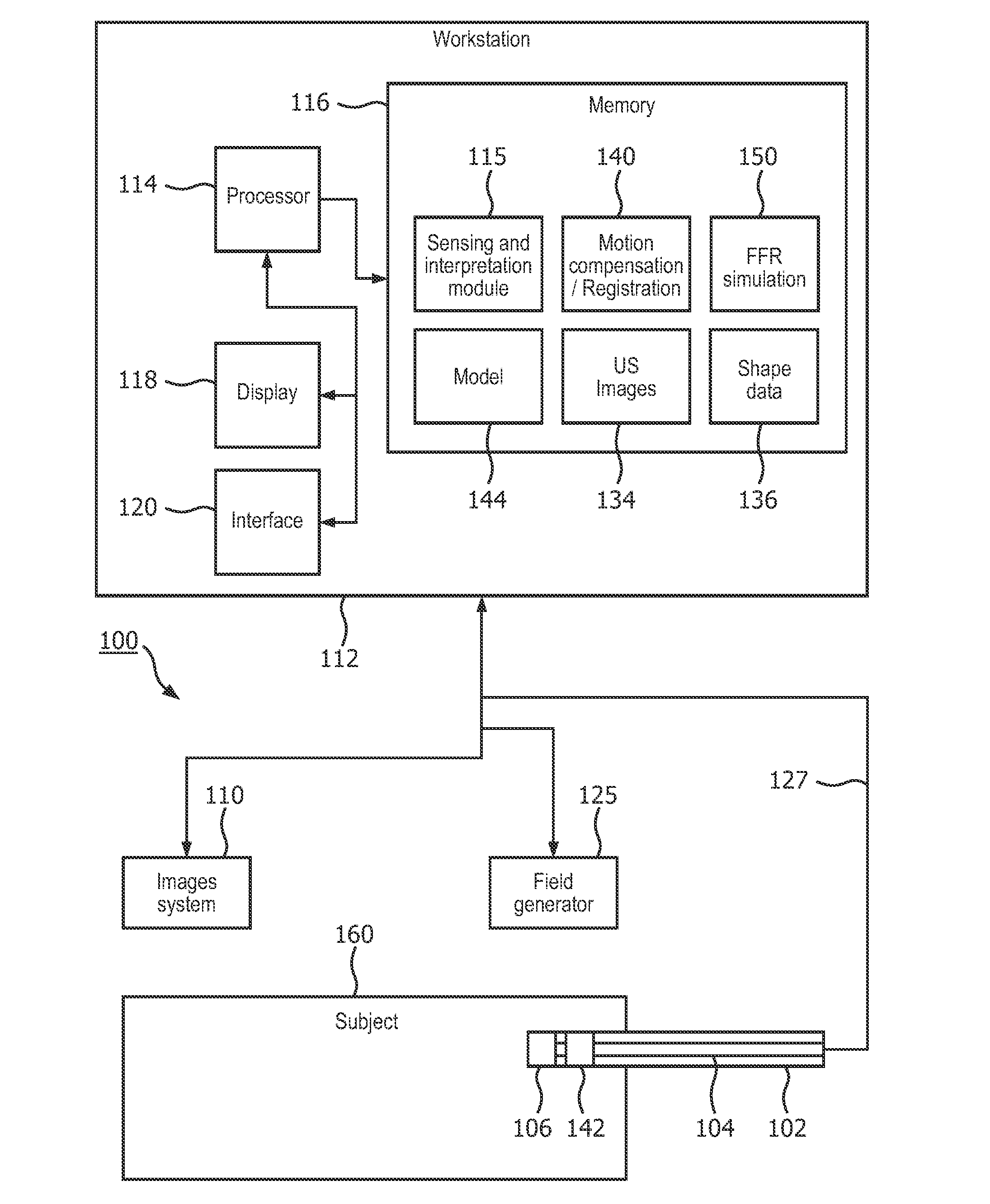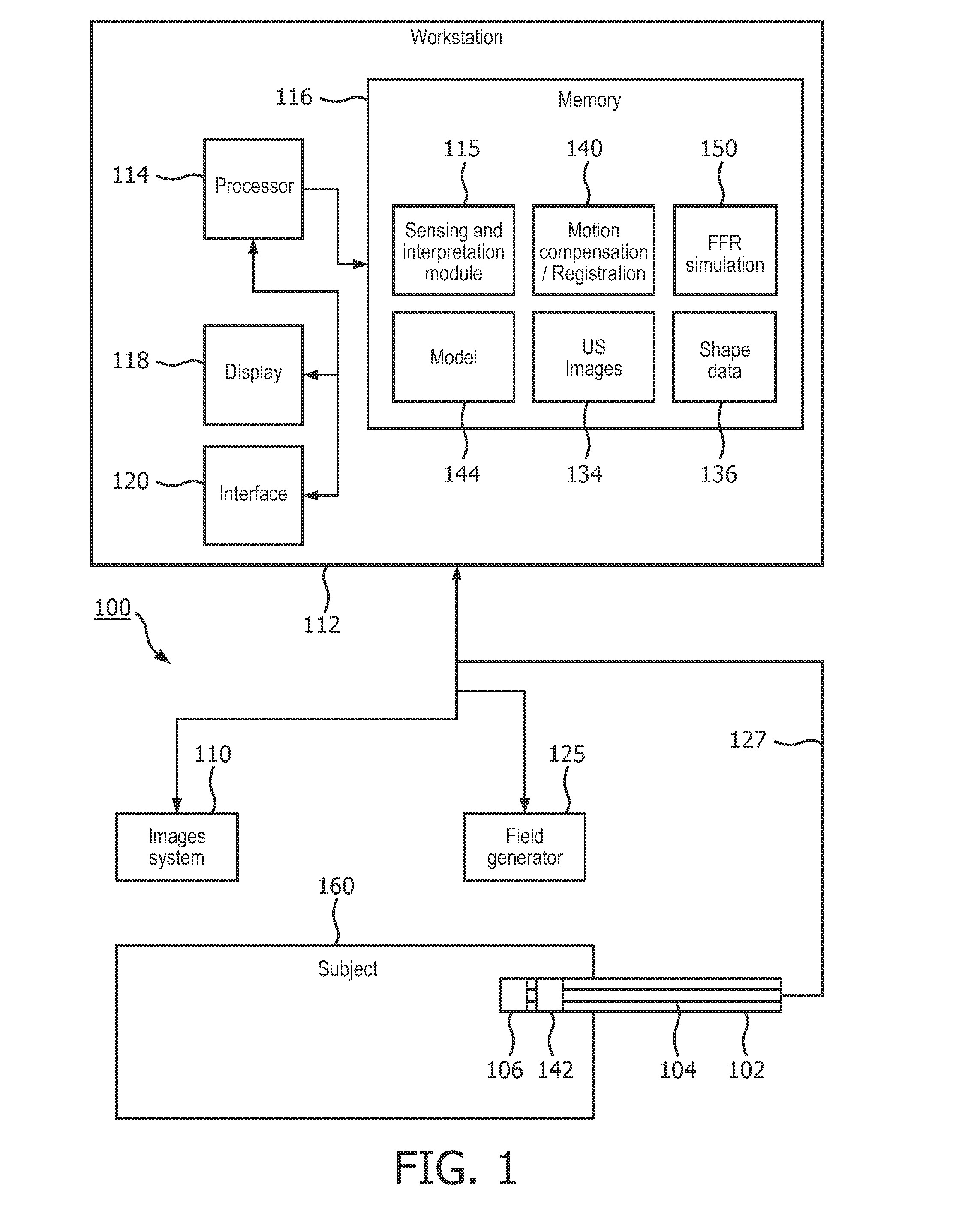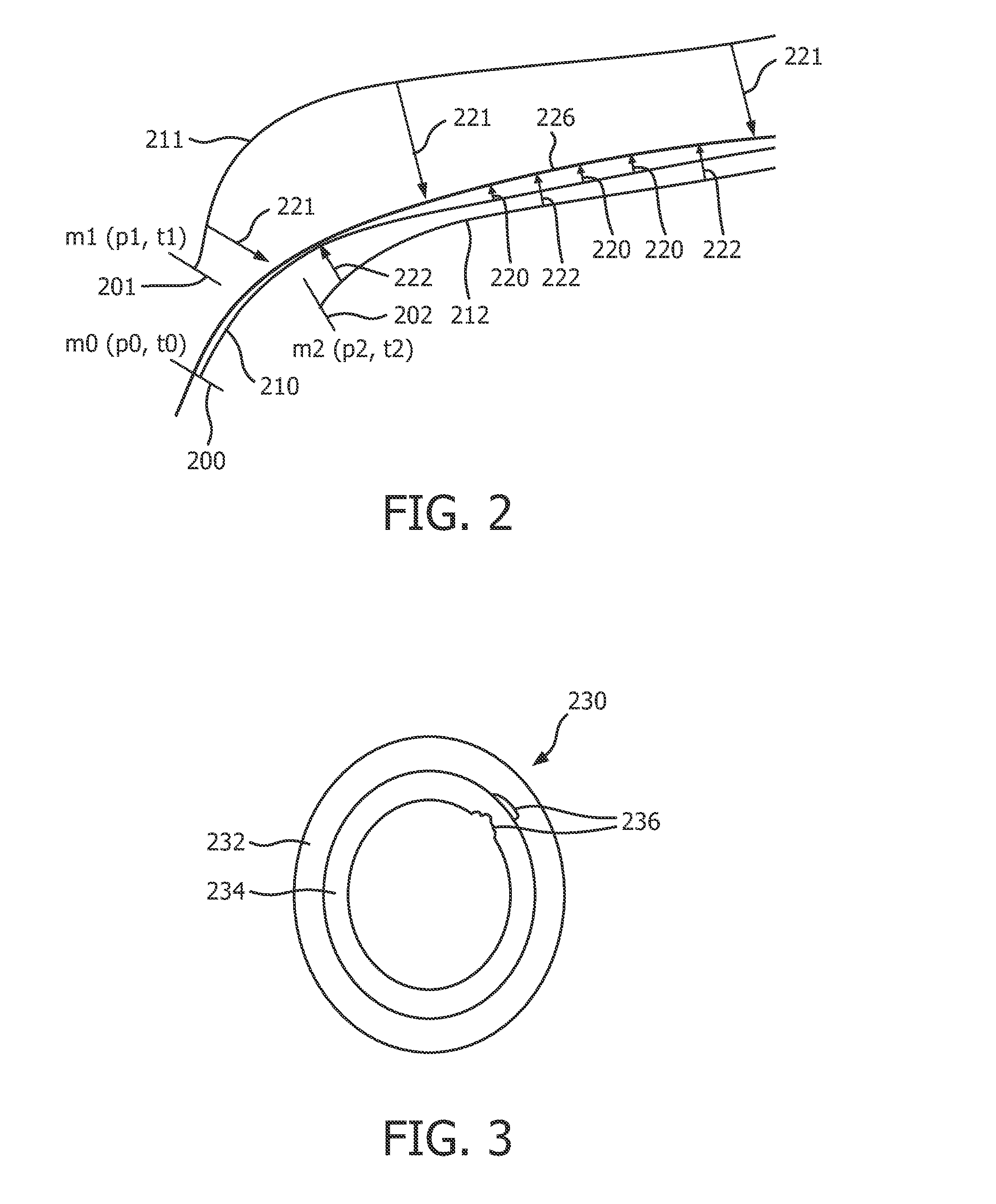Shape sensed ultrasound probe for fractional flow reserve simulation
a fractional flow reserve and ultrasound probe technology, applied in the field of medical instruments, can solve problems such as incorrect measurements
- Summary
- Abstract
- Description
- Claims
- Application Information
AI Technical Summary
Benefits of technology
Problems solved by technology
Method used
Image
Examples
Embodiment Construction
[0016]Fractional flow reserve (FFR) is a technique used in coronary catheterization to measure pressure differences across, e.g., a coronary artery stenosis. Pressure wires are normally used in an invasive procedure to measure the pressure difference before and after a stenosis, a potential stenosis or area of interest. In accordance with the present principles, an alternative is employed by using a shape sensed imaging probe (e.g., an intravascular ultrasound (IVUS) probe or an optical coherence tomography (OCT) imaging device) for fractional flow reserve simulation. While IVUS (or OCT) collects continuous measurements of lumen diameter and vessel wall, shape sensing permits three-dimensional reconstruction of the vessel even in the presence of a heart beat and respiratory motion. This information can be employed to generate an accurate three or even four-dimensional model (space and time) of the vessel as an input for the FFR calculation using, e.g., computational fluid dynamics.
[...
PUM
 Login to View More
Login to View More Abstract
Description
Claims
Application Information
 Login to View More
Login to View More - R&D
- Intellectual Property
- Life Sciences
- Materials
- Tech Scout
- Unparalleled Data Quality
- Higher Quality Content
- 60% Fewer Hallucinations
Browse by: Latest US Patents, China's latest patents, Technical Efficacy Thesaurus, Application Domain, Technology Topic, Popular Technical Reports.
© 2025 PatSnap. All rights reserved.Legal|Privacy policy|Modern Slavery Act Transparency Statement|Sitemap|About US| Contact US: help@patsnap.com



